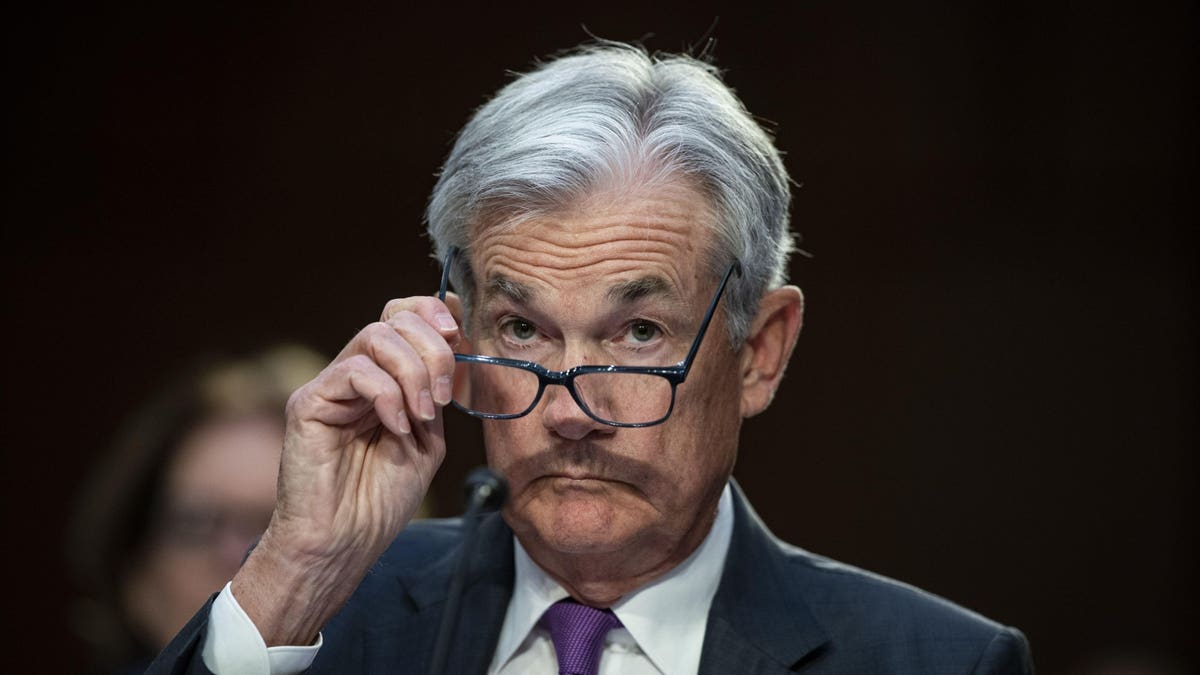Topline
The Federal Reserve continued its aggressive rate-hiking campaign on Wednesday but opened the door to keeping rates flat at future meetings—a sign the central bank may believe risking more unease in the banking sector could pose a greater threat to the economy than lingering high inflation.
Key Facts
At the conclusion of its two-day policy meeting on Wednesday, the Federal Open Markets Committee said it would raise the federal funds rate (the rate at which commercial banks borrow and lend reserves) by 25 basis points to a target range of 5% to 5.25%—the highest level since September 2007.
In a sign the Fed may be done hiking rates, officials in their post-meeting statement removed language indicating the committee “anticipates that some additional policy firming may be appropriate”—a move that Vital Knowledge founder Adam Crisafulli calls a “strong signal” from the Fed that the federal funds rate has hit its ceiling.
Officials also reiterated the Fed would be prepared to adjust the stance of monetary policy “if risks emerge that could impede the attainment” of their economic goals.
Despite First Republic over the weekend becoming the third bank to fail this year, the Fed made no mention of the collapse in their statement, instead just once again saying the “banking system is sound and resilient.”
Key Background
The Fed began raising rates as inflation reached a 40-year high last March, but expectations for the pace and intensity of incoming rate hikes grew more aggressive amid stubborn price gains and criticism that the central bank waited too long to start the hikes. The increases, which work to slow inflation by tempering consumer demand, have already sparked downturns in the housing and stock markets, and the tumult reached another tipping point just this week—with First Republic’s sudden collapse marking the second biggest bank failure in history. Nevertheless, the recession many experts predicted could happen has yet to materialize, giving the Fed fodder to continue hiking. The pause signals that sentiment may be changing.
Crucial Quote
“The Fed still has clear inflationary pressures to battle against, for the time being,” says Cailin Birch of the Economist Intelligence Unit. “Further rate hikes later in the year remain a possibility.”
Tangent
Annual inflation clocked in at 5% in March, falling for a ninth-straight month and well below a peak of 9.1% in June. However, that’s still far higher than the Fed’s long-standing target of 2%, and the latest data wasn’t all positive for the Fed. Core inflation, which tends to reflect underlying (and therefore more stubborn) inflationary pressures, actually increased in March, Birch notes.
Here’s How The Fed’s Rate Hikes Have Changed The Economy (Forbes)
First Republic Bank Failure: A Timeline Of What Happened (Forbes)
‘Recession Incoming’: Economic Growth Slows To 1.1% (Forbes)
Read the full article here


